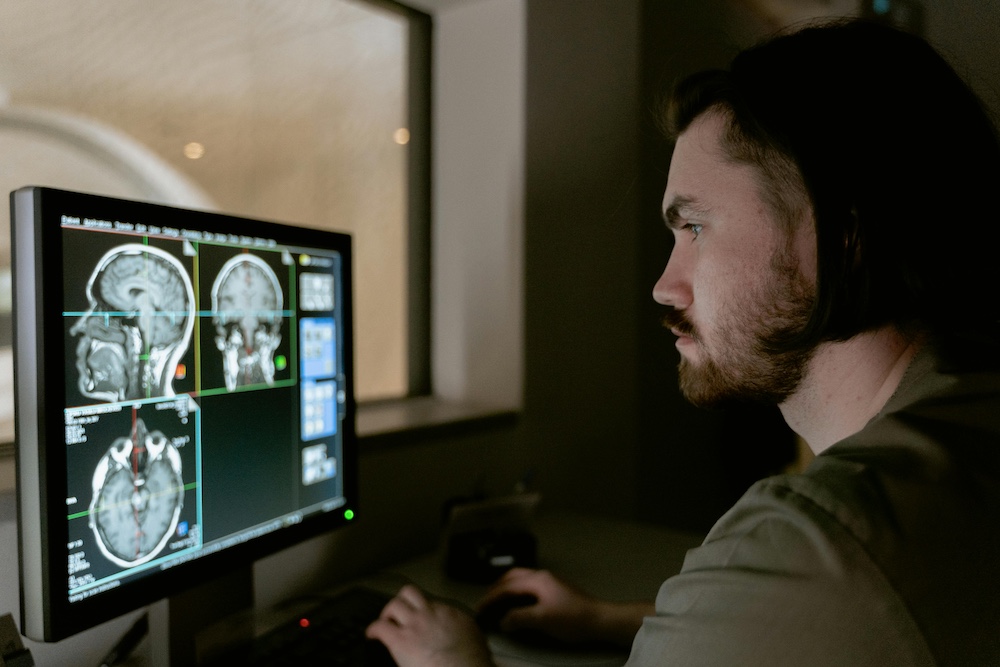Why Redaction Matters in Legal AI ⚖️
Redaction—the selective removal of sensitive information from documents—isn't just a legal formality. It's a critical safeguard for client privacy, intellectual property, trade secrets, and regulatory compliance.
In legal workflows, redaction appears in:
- Evidence disclosures
- Freedom of Information Act (FOIA) requests
- Internal investigations
- E-discovery
- Public legal filings
Failure to properly redact sensitive content can result in:
- Violations of attorney-client privilege
- Breaches of GDPR, HIPAA, or CCPA
- Reputational damage and fines
As law firms, courts, and corporate legal departments digitize their archives, redaction at scale becomes essential—and that’s where AI steps in.
What Makes Legal Redaction Complex?
Legal documents are dense, varied, and context-dependent. AI redaction is not just about detecting entities like names or dates—it’s about understanding which instances must be hidden and why.
Here are key challenges:
- Ambiguity in Legal Language: Phrases like "the party of the first part" or "heretofore mentioned" require contextual understanding.
- Nested Confidentiality: A single sentence might include public and private data together.
- Variable Formatting: Legal documents include headers, footers, stamps, scanned signatures, and handwritten notes.
- Jurisdictional Differences: GDPR, HIPAA, FOIA, and state-level privacy laws may each require redacting different elements.
Training an AI to redact effectively means teaching it to walk this tightrope—with precision.
Redaction Use Cases: Where AI Meets Law
Let’s break down some of the most common and high-stakes applications of AI-driven redaction in the legal domain:
🏛️ Court Rulings for Public Access
Judiciaries often release court decisions publicly. However, these documents must omit protected health information, minor identities, or witness names. AI helps automate redaction while ensuring compliance with judiciary standards.
🤝 M&A and NDAs
Merger and acquisition documents and NDAs often contain business secrets, client names, or strategic plans. Before data rooms are shared with potential investors or stakeholders, redaction is mandatory.
📂 Internal Legal Review
During internal audits or investigations, sensitive employee or client data must be redacted before review is escalated.
📜 FOIA Requests and Government Transparency
Public requests for information under FOIA or GDPR Subject Access Requests often trigger redaction tasks. AI helps expedite the process while reducing human error.
🏥 Healthcare Litigation
Legal departments in hospitals or insurance companies often need to redact medical records or billing information before using them in court proceedings—ensuring HIPAA compliance.
What Should Be Redacted? 🔍
Before training any AI system, it's crucial to define the types of information that must be redacted. Depending on the jurisdiction and use case, this may include:
- Personally Identifiable Information (PII)
- Names, addresses, phone numbers
- Protected Health Information (PHI)
- Medical record numbers, diagnoses, treatments
- Financial data
- Bank account details, payment history
- Legal parties
- Minor children, victims, informants
- Trade secrets or IP
- Proprietary processes, source code excerpts
- Sensitive metadata
- Author identities, document history
🔗 Useful Resource: U.S. DOJ Guide to Redaction Standards
Structuring Your Training Dataset for Redaction AI
Legal AI systems are only as good as the data used to train them. Annotation for redaction must reflect real-world complexity and follow rigorous standards.
Key Steps to Structuring Data:
- Use Realistic Document Formats: Include PDFs, scans, handwritten notes, contracts, and court transcripts.
- Contextual Labeling: Mark not just the entity (e.g., "John Smith") but the reason for redaction (e.g., "minor", "witness", "plaintiff").
- Overlapping Redaction Scenarios: Annotate overlapping confidential elements like addresses inside footnotes or names within quotes.
- Diverse Jurisdictional Scenarios: Include documents governed by GDPR, HIPAA, FOIA, etc., and annotate accordingly.
- Include Non-Redacted Control Examples: Teach the AI what not to redact by including neutral data like case law citations or judge names.
💡 Annotators should have a background in legal terminology and be trained on confidentiality policies.
Building Redaction Logic into AI Pipelines 🧠
Redaction annotation isn't just about marking sensitive data—it's about building smart models that make redaction decisions based on context.
Core Capabilities to Train:
- NER (Named Entity Recognition): To locate names, places, dates, and organizations.
- Classification Models: To identify whether an entity is sensitive in a given legal context.
- Document Segmentation: To separate sections like headers, body, footnotes, and annotations.
- Rule-Based Overrides: Combine machine learning with symbolic rules for regulatory redaction (e.g., “Always redact social security numbers”).
- Confidence Thresholding: Use model confidence scores to flag uncertain redaction suggestions for human review.
🔗 Related Read: Stanford’s Legal NLP Research
Data Privacy, Compliance & AI: Walking the Line ⚠️
Training AI on sensitive legal documents raises real compliance concerns. Whether you're operating in Europe, the U.S., or globally, here’s what to keep in mind:
GDPR Considerations:
- Use pseudonymized or synthetic data wherever possible.
- Ensure consent or legitimate interest for using real legal documents.
- Implement data minimization and storage limitation policies during training.
HIPAA Compliance:
- AI models trained on PHI must ensure all identifiers under the Safe Harbor method are removed or anonymized.
- Maintain audit trails and access controls in Data Labeling tools.
Data Residency & Sovereignty:
- Redaction data pipelines must respect where legal data can be stored or processed—especially in cross-border cases.
💡 Pro Tip: Build your redaction training pipeline to include real-time compliance checks as part of the data labeling and model evaluation process.
Enhancing Model Performance: Tips from the Field
To ensure your AI model not only works but works reliably in legal production environments, apply these proven practices:
- Use Ensemble Methods: Combine rule-based, NER-based, and BERT-style models to boost reliability.
- Train on Document Layout: Use OCR and visual layout data (e.g., from PDFs or TIFF scans) to differentiate signature blocks from body text.
- Incremental Fine-Tuning: Continuously improve your model with redaction edge cases flagged by legal reviewers.
- Human-in-the-Loop Systems: Let legal experts validate redaction suggestions before final approval.
- Version-Controlled Annotation Sets: Always track updates and corrections in labeled data to ensure traceability.
Real-World Success: Legal Redaction at Scale 🚀
Training AI for redaction isn’t theoretical—it’s already transforming legal operations across industries. Let’s explore how organizations are using AI-powered redaction to streamline compliance, reduce manual effort, and avoid costly oversights.
📁 U.S. Courts and PACER Modernization
One of the most influential examples of redaction automation is the modernization of the PACER (Public Access to Court Electronic Records) system. With millions of legal filings made public each year, courts faced mounting pressure to prevent leaks of sensitive information—particularly identities of minors, victims, and medical data in civil suits.
In collaboration with legal tech providers, several district courts piloted natural language processing (NLP) tools trained to detect PII and legal privilege terms. These models were integrated with existing electronic filing workflows to auto-suggest redactions before documents were approved for public release.
Impact:
- Reduced redaction time by over 60% per case
- Prevented accidental exposure of personal data in high-profile decisions
- Set precedent for other judicial systems considering AI adoption
🔗 See also: Federal Judiciary Privacy Policy
🏢 BigLaw Firms: Redaction-as-a-Service
International law firms like Clifford Chance and Latham & Watkins have adopted AI redaction pipelines in their e-discovery and due diligence operations. These firms process thousands of contracts, NDAs, and emails during litigation and corporate transactions. Previously, teams of junior associates spent weeks manually blacking out sensitive lines—a process prone to fatigue and human error.
Now, redaction models trained on privileged language patterns and document-specific rules are used to pre-process large volumes of documents. AI suggests redactions, which are then approved, adjusted, or rejected by supervising attorneys.
Why it works:
- Faster turnaround during litigation deadlines
- Improved redaction consistency across teams and jurisdictions
- Reduced overhead from outsourcing or overtime
Bonus: Several firms are now offering AI-redacted documents as a billable product—positioning redaction as a monetizable service.
📰 FOIA Redaction in Investigative Journalism
Media organizations and nonprofits handling FOIA responses have begun leveraging AI tools to expedite redaction for public reports. For example, ProPublica and The Markup have collaborated with legal tech companies to build redaction assistants that:
- Detect names of government employees
- Flag classified content in national security files
- Identify relationships between entities (e.g., contractors, lobbyists)
These tools allow investigative journalists to publish faster without relying solely on overburdened legal reviewers. Even better, they’ve helped expose patterns of over-redaction by government agencies.
🔗 Explore tools like: DocumentCloud Redaction
🏥 HIPAA Redaction in Healthcare Law
Hospitals and insurers facing malpractice litigation must redact large volumes of patient data. At Kaiser Permanente, an internal redaction model was trained to detect 18 identifiers specified under HIPAA, from patient names to biometric records.
The AI system was integrated with their electronic health record (EHR) export process, ensuring every document sent to opposing counsel or a court was reviewed for compliance before transmission.
Key Takeaway: Legal departments that integrate redaction AI into their existing IT infrastructure can enforce privacy policies at the data level, not just the document level.
What the Future Holds for Redaction AI 📈
The evolution of AI-driven redaction is just beginning. From smarter contextual understanding to seamless cross-border compliance, future innovations promise to take redaction beyond entity masking—and into intelligent legal reasoning.
Here’s a glimpse into what’s next:
🤖 Context-Aware Redaction Engines
Current redaction models can recognize what needs redacting. The next generation will know why.
Expect redaction engines to:
- Analyze legal privilege and intent in text
- Differentiate between a public official’s name in a ruling (non-redactable) vs. a minor’s identity in the same document (must be redacted)
- Understand conditional logic, such as “redact only if the party is not already disclosed elsewhere”
This will require integrating multi-modal inputs: combining text, layout, metadata, and access rights.
🧠 Embedding Legal Reasoning into AI Models
Redaction isn’t just an NLP task—it’s a legal judgment. Future AI systems may incorporate legal reasoning engines or integrate with legal knowledge graphs to simulate decisions a human lawyer would make.
For example:
- Linking legal references to identify confidential expert witnesses
- Using precedent from prior court rulings to determine redaction eligibility
- Adapting redaction rules based on case law evolution
This opens the door to adaptive redaction models that evolve with policy shifts and judicial rulings.
🌍 Multilingual and Cross-Jurisdiction Redaction
Global law firms increasingly manage multilingual document repositories. AI redaction must evolve to:
- Detect sensitive information in multiple languages
- Handle regional redaction standards (e.g., CNIL in France vs. CCPA in California)
- Maintain data sovereignty, ensuring redaction happens where documents are stored
Expect platforms to offer localization layers, allowing redaction models to switch legal logic depending on the country or jurisdiction being served.
📜 Immutable Redaction Logs with Blockchain
To bolster auditability and legal defensibility, some redaction platforms are exploring blockchain-based tracking of redaction activity.
Benefits include:
- Timestamped records of who redacted what and why
- Immutable logs for regulatory audits
- Enhanced trust for third-party recipients or regulators
This could be especially valuable for compliance-heavy sectors like finance, government, or healthcare.
✨ Generative AI for Justification and Explanation
One emerging feature is the use of generative models (like GPT) to auto-generate explanations for why an item was redacted. These justifications can accompany redacted documents and help:
- Streamline approvals
- Educate junior lawyers
- Satisfy court or regulator queries
Imagine a system that redacts a party’s name and adds:
“This name was redacted under HIPAA due to the individual being a patient in an active mental health case.”
Transparency, traceability, and trust—built right into your pipeline.
🛠️ Seamless Redaction-Review-Release Pipelines
The future of redaction isn’t just smarter—it’s smoother. Expect cloud-based tools to offer:
- Instant upload and model-based pre-redaction
- Role-based review (junior/senior legal check)
- Version control and rollback options
- One-click secure export (with redacted and unredacted copies)
Some platforms may even automatically redact sensitive content during scanning or OCR—before a document ever hits your legal team’s inbox.
Before You Go… Let’s Make Confidentiality Smarter Together 🔐
If your legal team, AI startup, or document processing pipeline needs to build reliable, compliant redaction models—we can help. From curated training datasets to fully managed annotation services, our experts at DataVLab are here to ensure your AI doesn’t just see sensitive information—but understands what to do with it.
👉 Contact our legal AI experts to explore tailored redaction annotation workflows, dataset audits, or end-to-end model training support.
📌 Related: How to Train OCR Models on Scanned Contracts and Court Documents for Legal AI





